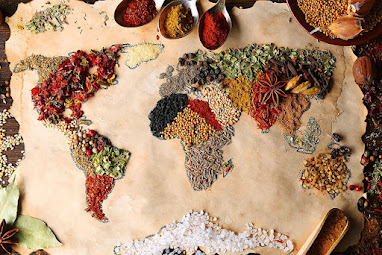The Global Kitchen

The Western cuisine and The North America cooking influences What is Western Cuisine? this is for sure a hard question to answer, since food is always cross with culture and that means diversity. We can give different answers to our main question, on one hand we can say that is related with the strong influence of French Cuisine that made rules about cooking with the Auguste Escoffier’s modernization of classical French cooking techniques. On the other hand, we also can say that is related with main ingredient, flavors and spices this part of the world uses (pasta, mother sauces, meats, plating, salt and pepper, etc). At the same time, many countries in the Western have some of this influences but other are stronger, like the case of Latin American countries cuisines that are mixed with local tradition, like the Mexican mole or the Japanese influences in Peru that blend with local ingredients and are far from French tradition, the corn as main ingredient in many dishes (something no ...


